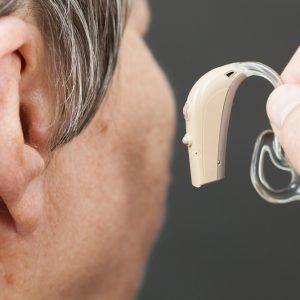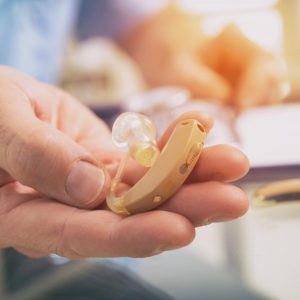Have you ever contemplated to get a hearing aid? Or were you skeptical about its use? The simple fact is there’s no dearth of hearing aids in the market. But the trick lies in choosing the most appropriate one. Besides, there are some valid concerns that must be addressed.
For example, the best options for you, things to look for when buying, and ways to get used to it are a few things you need to take into account. Remember your hearing aids cannot be substitutes for normal hearing. Think of them as supplements that enhance your hearing abilities. By amplifying the soft sounds, the aids help you hear a variety of sounds that you couldn’t hear earlier.
How Do Hearing Aids Work?

Not many know this but hearing aids utilize the basic parts to carry sounds in the environment and transfer inside your ears to make them loud and clear. Digital aids are usually powered with a proper hearing aid battery. On the other hand, there are small microphones that collect sounds present around the environment. For instance, any computer chip with an amplifier converts incoming sounds to a digital code. After that, it adjusts once the analysis of the sounds is finished. The amplified signals get converted then into sound waves to reach the ears via speakers.
Types Of Hearing Aids

As stated earlier, choices in hearing aids are aplenty. But the real work is selecting the best one for your need. Check for prices, positioning, and special features when they’re put in the ears. In general, hearing aid designers make smaller aids so as to meet the requirements for a hearing aid. These, however, are not easily noticed, nor do they have the power to offer the enhanced effect of hearing as expected. Some common styles include:
CIC or mini CIC (completely inside the ear canal) is the smallest type and are less likely to catch the noise of the wind. They don’t necessarily contain add-on features like volume control or directional microphone and is also susceptible to earwax. As a result, speakers get clogged.
ITC (in the canal) is also less visible like the CIC ones. There are features that don’t fit completely in these and are tough to adjust too; thanks to its small size.

ITE (in the ear) aids are customized in two ways. First off, it can fill the larger section of your outer ear, and secondly, it can be customized to fill the lower part of the ear. Anyone battling with severe hearing impairment can resort to these. They are much handier and include essential features like volume control, larger battery, and greater visibility.
BTE (behind the ear) aids are those that hook just over the top of the ear and rests behind. There’s a tube that connects the hearing aid to an ear-mold, a custom earpiece that fits inside your ear canal. Traditionally, this is the largest one and can be amplified more than most of its counterparts. Nowadays, few mini designs are streamlined and available in the market.

RIC/RITE (receiver in canal or receiver in-ear) styles resemble the behind-the-ear aids having a speaker or receiver in the ear or canal. Apart from the tubing, there’s also a tiny wire that connects these pieces.
Open-fit is a variation of behind-the-ear styles and comes with a thin tube. The ear canal stays open in this one, owing to the style and low-frequency sounds enter the ear quite naturally. This creates room for high-frequency sounds to get amplified via the aid.
Things To Keep In Mind Before You Buy Hearing Aids

Despite plenty of options, the onus lies on you to explore and understand which type is meant for you. For additional benefits, you can first get a checkup to begin with. Audiologists will help you in this regard, so take their referral. Opting for a demo is a must before you get used to the device.
While doing so, you would be able to gauge if the hearing aid you’ve chosen is capable of meeting your future needs. If you feel that’s the best bet, look for its warranty period. Be on the lookout for tempting offers and misleading claims. You can finally buy if you’re sure it makes for a worthy purchase.
Getting habituated with your new hearing aids is best left to time. You might notice a gradual betterment in your listening, but patience is the key.





